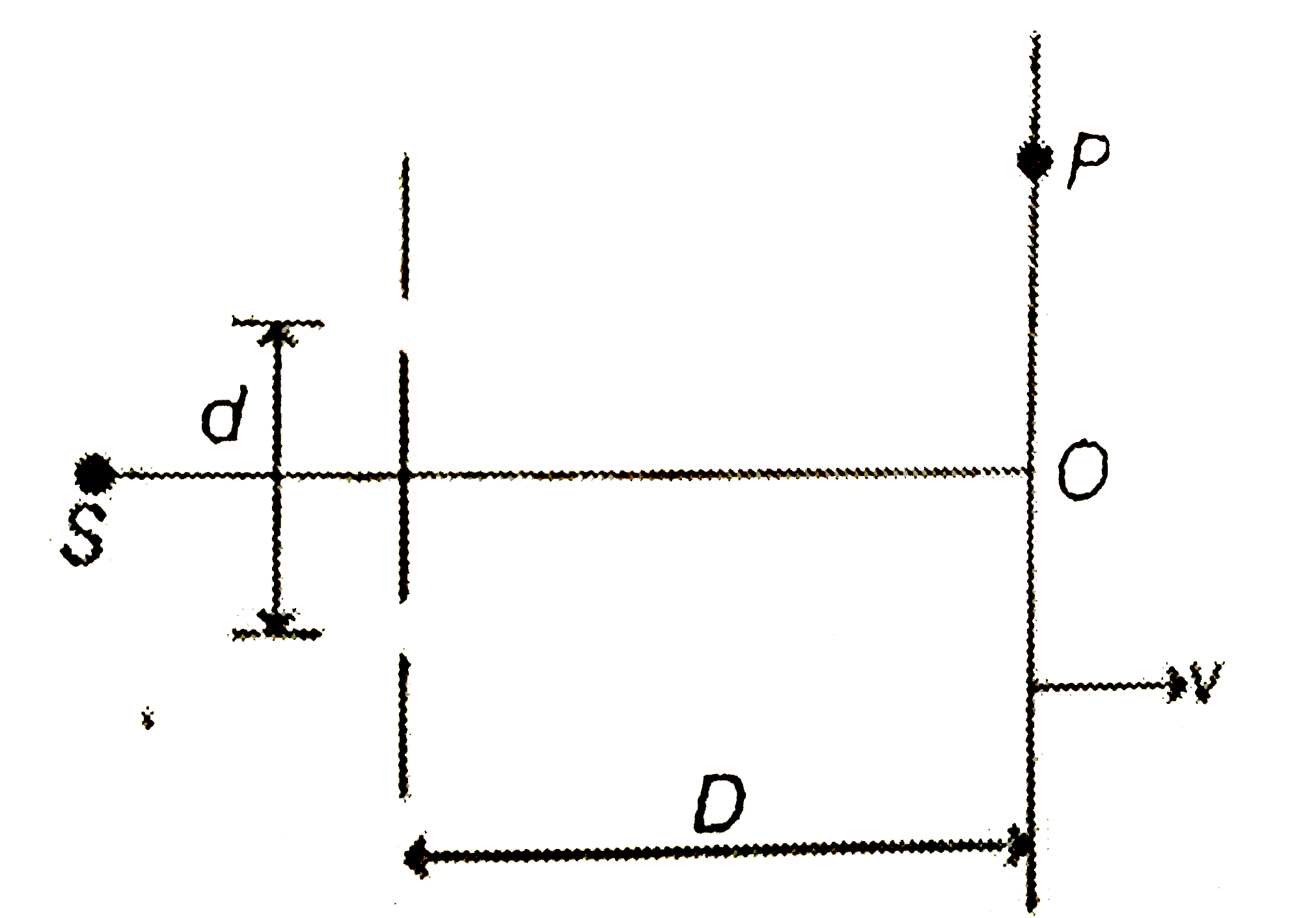In YDSE, if a bichromatic light having wavelengths λ1 and λ2 is used, then maxima due to both lights will overlaps at a certain distance y from the central maxima. Take separation between slits as d and distance between screen and slits as D. Then the value of y will be
(λ1+λ22D)d
λ1−λ2D×2d
LCM of λ1Dd and λ2Dd
HCF of λ1Dd and λ2Dd
The correct Answer is:c
To solve the problem, we need to find the distance y from the central maxima where the maxima due to two different wavelengths λ1 and λ2 overlap in Young's Double Slit Experiment (YDSE).
1. Understanding the formula for maxima in YDSE:
In YDSE, the position of the maxima on the screen for a single wavelength is given by the formula:
yn=n⋅D⋅λd
where:
- yn is the position of the nth maxima,
- D is the distance from the slits to the screen,
- d is the separation between the slits,
- λ is the wavelength of the light used,
- n is the order of the maxima (0, 1, 2, ...).
2. Position of maxima for each wavelength:
For the first wavelength λ1:
yn1=n1⋅D⋅λ1d
For the second wavelength λ2:
yn2=n2⋅D⋅λ2d
3. Setting the positions equal for overlap:
To find the distance y where the maxima overlap, we set yn1 equal to yn2:
n1⋅D⋅λ1d=n2⋅D⋅λ2d
4. Simplifying the equation:
Since D and d are common in both terms, we can cancel them out:
n1⋅λ1=n2⋅λ2
5. Finding the relationship between orders of maxima:
Rearranging gives:
n1n2=λ2λ1
This means that the orders of the maxima are in the ratio of the wavelengths.
6. Finding the minimum distance of overlap:
The positions y where the maxima overlap will be at the least common multiple (LCM) of the individual distances for each wavelength:
y=LCM(D⋅λ1d,D⋅λ2d)
7. Final expression for y:
Thus, the distance y where the maxima overlap is given by:
y=Dd⋅LCM(λ1,λ2)
In YDSE, the position of the maxima on the screen for a single wavelength is given by the formula:
yn=n⋅D⋅λd
where:
- yn is the position of the nth maxima,
- D is the distance from the slits to the screen,
- d is the separation between the slits,
- λ is the wavelength of the light used,
- n is the order of the maxima (0, 1, 2, ...).
For the first wavelength λ1:
yn1=n1⋅D⋅λ1d
For the second wavelength λ2:
yn2=n2⋅D⋅λ2d
To find the distance y where the maxima overlap, we set yn1 equal to yn2:
n1⋅D⋅λ1d=n2⋅D⋅λ2d
Since D and d are common in both terms, we can cancel them out:
n1⋅λ1=n2⋅λ2
Rearranging gives:
n1n2=λ2λ1
This means that the orders of the maxima are in the ratio of the wavelengths.
The positions y where the maxima overlap will be at the least common multiple (LCM) of the individual distances for each wavelength:
y=LCM(D⋅λ1d,D⋅λ2d)
Thus, the distance y where the maxima overlap is given by:
y=Dd⋅LCM(λ1,λ2)
Topper's Solved these Questions
- BOOK - CENGAGE PHYSICS ENGLISHCHAPTER - WAVE OPTICSEXERCISE - Multiple Correct8videos
WAVE OPTICS
- BOOK - CENGAGE PHYSICS ENGLISHCHAPTER - WAVE OPTICSEXERCISE - Assertion- Reasoning13videos
WAVE OPTICS
- BOOK - CENGAGE PHYSICS ENGLISHCHAPTER - WAVE OPTICSEXERCISE - Subjective11videos
WAVE OPTICS
- BOOK - CENGAGE PHYSICS ENGLISHCHAPTER - SOURCES OF MAGNETIC FIELDEXERCISE - single correct Ansewer type12videos
SOURCES OF MAGNETIC FIELD
Similar Questions
Bichromatic light of wavelengths λ1=5000Åandλ2=7000Å are used in YDSE. Then,
View SolutionBichromatic light is used in YDSE having wavelengths λ1=400nm and λ2=700nm Find minimum order of λ1 which overlaps with λ2
View SolutionLight of wavelength λ is incident on a slit of width d and distance between screen and slit is D. Then width of maxima and width of slit will be equal if D is
View SolutionBichromatic light is used in YDSE having wavelengths
λ1=400nmandλ2=700nm. Find minimum order of bright fringe of λ1
which overlaps with bright fringe of λ2 .View SolutionMonochromatic light from a narrow slit illuminates two parallel slits producing an interference pattern on a screen. The separation between the two slits is now doubled and the distance between the screen and the slits is reduced to half. The fringe width
View SolutionIn YDSE, separation between slits is 0.15 mm, distance between slits and screen is 1.5 m and wavelength of light is 589 nm, then fringe width is
View SolutionIn YDSE, separation between slits is 0.15 mm, distance between slits and screen is 1.5 m and wavelength of light is 589 nm, then fringe width is
View SolutionIn a single slit diffraction of light of wavelength λ by a slit of width e, the size of the central maximum on a screen at a distance b is
View SolutionIn YDSE apparatus shown in figure wavlength of light used is λ. The screen is moved away form the source with a constant speed v. Initial distance between screen and plane of slits was D.

At a point P on the screen the order of fringe willView SolutionConsider the situation shown in figure. The two slite S1andS2
placed symmetrically around the centre line are illuminated by a monochromatic
light of wavelength lambda. The separation between the slits is d. The light transmitted
by the slits falls on a screen M1 placed at a distance D from the slits. The slit S3 is
at the centre line and the slit S4 is at a distance y form S3. Another screen M2 is
placed at a further distance D away from M1. Find the ration of the maximum to
minimum intensity observed on M2 if y is equal to (d<<D).
View Solution

